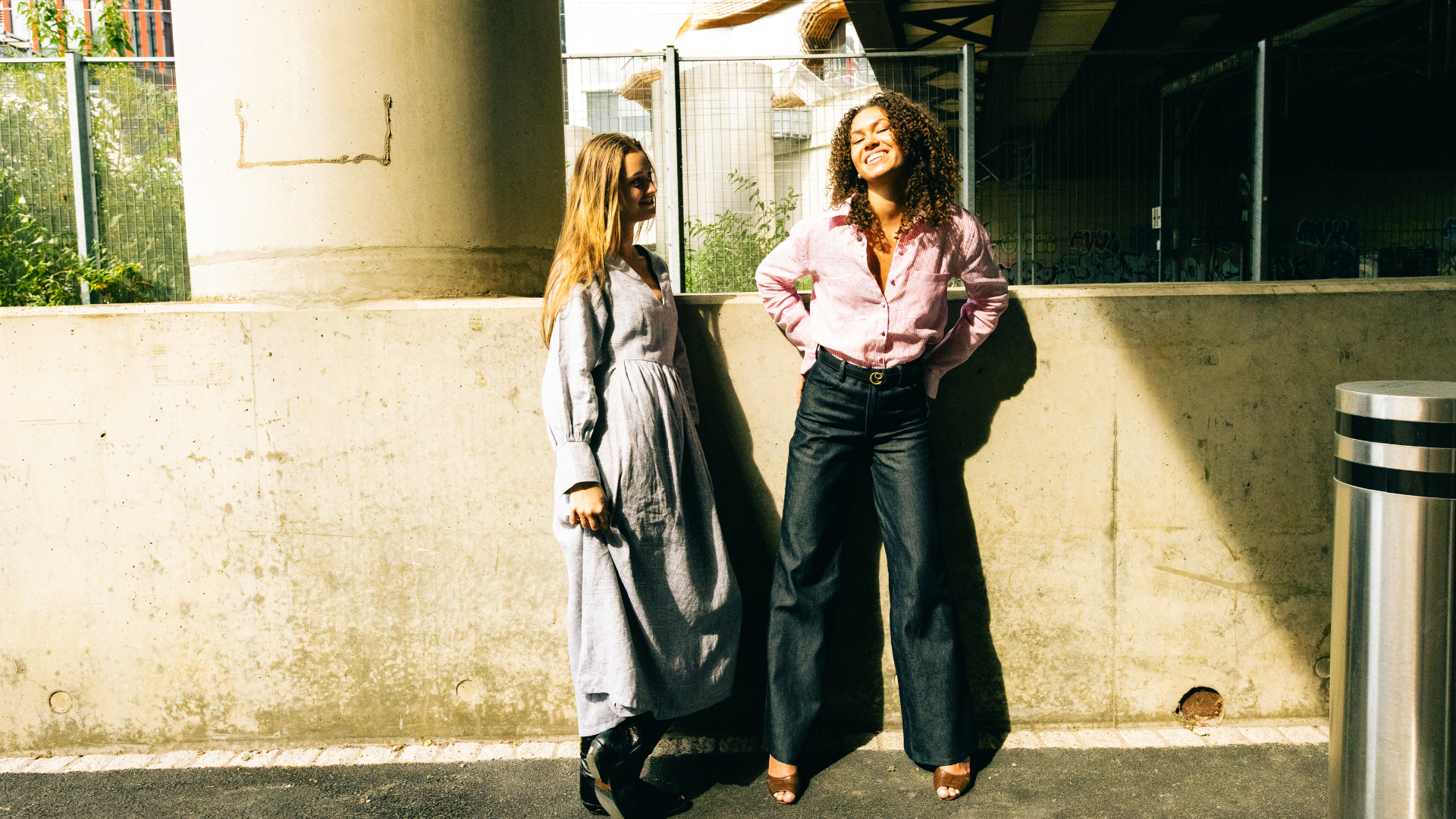Article: What is Slow Fashion? (Slow Fashion Meaning & Slow Fashion Definition)

What is Slow Fashion? (Slow Fashion Meaning & Slow Fashion Definition)
When people ask what is slow fashion, they’re rarely after a dictionary answer. They want to know why clothes labelled “ethical” or “sustainable” deserve their attention and their money. This guide unpacks the slow fashion meaning, digs into the definition, and shows why it stands in direct opposition to fast fashion. By the end, you’ll see how slow fashion choices aren’t just personal—they’re powerful and benefit both people and the planet.
Understanding the Slow Fashion Definition in Simple Terms
At its core, slow fashion is a movement that values quality, longevity, and impact. Fast fashion floods the world with disposable clothes. Slow fashion refuses to do so.
Think of it as mindful dressing: buying fewer pieces, choosing well-made garments, and ditching the trend treadmill. Clothing isn’t a throwaway, it’s an investment. Something you wear, rewear, and treasure, not shove to the back of your wardrobe or recycling bin.
Sustainable fashion and slow fashion overlap, but slow fashion is sharper. It’s about pulling the brakes on overproduction while staying accountable to the planet and the people making your clothes.
The Opposite of Fast Fashion: Why Slow Fashion Matters
To understand slow fashion, just look at its opposite. Fast fashion is overproduction, pollution, and exploitation. Slow fashion is ethics, sustainability, care, and longevity.
It’s fewer designs, better materials, and safe working conditions. It’s responsibility stitched into every seam.
In plain words: slow fashion is clothing made slower, kinder, smarter; for people and for the planet. The opposite of fast fashion.
Slow Fashion Meaning and Core Principles
So, what does slow fashion really mean? At its heart, it’s about stripping things back to what matters and rejecting the chaos of fast fashion. The core principles:
-
Quality over quantity – Slow fashion celebrates pieces built to last. Durable fabrics, timeless cuts, organic materials. No chasing trends, just classics that work season after season and style with everything.
-
Ethical production – Every garment is crafted with care and respect. Makers are paid fairly and given the time to do their job well. No loose threads, no rushed hems. True craftsmanship takes time.
-
Environmental impact – Sustainability isn’t a buzzword here, it’s a practice. Local production, zero-waste patterns, using every last scrap. Fewer emissions, less water waste, no throwaway culture.
-
Conscious consumption – It’s not about buying more, but buying smarter. One dress worn in a dozen ways: light and breezy in summer, layered with jumpers and boots in winter. Conscious fashion isn’t just what brands do, it’s how you choose to shop and wear.
When we ask what is slow fashion, these four principles provide the answer. They show why the slow fashion meaning isn’t just about clothing, it’s a statement of values.
The Rise of the Slow Fashion Movement
Slow fashion didn’t just “appear.” It rose out of frustration. Out of people fed up with fast fashion’s lies, waste, and exploitation. Consumers started asking harder questions: not just what is slow fashion? but how do I take part?
The message is everywhere now, through documentaries, campaigns, and communities refusing to play by fast fashion’s rules. And it’s no longer niche. It’s global. It’s accountability, finally demanding a seat at the table.
But make no mistake: slow fashion isn’t just about switching brands. It’s about rethinking how we dress: buying second-hand, repairing what we’ve got, and pausing before hitting ‘add to cart’. It’s not a trend. It’s a cultural reset.
Benefits of Slow Fashion for People and the Planet
So, we know what slow fashion is. But why does it matter?
-
For the planet: Slow fashion means making less, wasting less, and respecting the resources we’ve got. Fewer carbon emissions. Less water drained. No chemical soup running into rivers. In the UK alone, we send enough unwanted clothes to landfill each year to fill a car park with 300 cars. That’s madness. And that’s just one country.
-
For workers: Slow fashion rejects the sweatshop model. It’s about fair pay, safe conditions, and the radical idea that makers are human beings. Time to work with care, time for breaks, time to live alongside their craft, not break themselves for it.
-
For consumers: Slow fashion gives you clothes worth owning. Pieces that don’t scream “last season,” but outlast every trend cycle. Buy less, wear more, and actually save money instead of throwing it away on fast fashion’s revolving door.
Slow fashion isn’t a buzzword, it’s a practice. It’s the choice to stop impulse buying and start building a wardrobe that’s about meaning, not waste.
FAQs About Slow Fashion
What is the Opposite of Fast Fashion?
Simple. Slow fashion.
Fast fashion spits out mountains of cheap, disposable junk. Slow fashion cuts through the noise with fewer, better-made pieces that respect people and planet. Durability, ethics, sustainability, it’s not an add-on, it’s the baseline.
What Does Sustainable Fashion Meaning Look Like in Practice?
Sustainable fashion is not a buzzword, it’s action. It’s fixing the clothes you love instead of binning them. Buying organic fabrics instead of plastic-laden crap. Supporting brands that pay workers fairly and keep supply chains clean. That’s sustainable fashion in practice and yes, that’s slow fashion, too.
Other common questions include:
-
Is slow fashion expensive?
Sometimes. But cost per wear? It’s the bargain of your life. Wear something 100 times and suddenly that £150 dress cost you £1.50 a go. Try getting that kind of value from a £20 fast fashion haul. Spoiler: you won’t. -
What is slow fashion’s role in climate action?
It’s simple: less waste, less pollution, less guilt. You know the maths. -
Is Slow Fashion Just for Small Brands?
Nope. Some bigger players are dipping their toes in: local production, higher quality ranges, but let’s be clear: most of the real work, the real disruption, is being done by small, principled labels who actually give a damn.
So, What Is Slow Fashion?
It’s the refusal to play by fast fashion’s dirty rules. It’s a way of producing, buying, and wearing clothes that challenges the costs of fast fashion. It’s buying less, buying better, and making it last. It’s proof that style doesn’t have to be exploitative or disposable. The opposite of fast fashion is responsibility, ethics, and care, stitched into every seam.
And yes, it looks better. On you, and on the planet.
Explore how those values are woven into every piece at No More Nobody collection.
Written by Monisha Hasigala Krishnappa



Leave a comment
This site is protected by hCaptcha and the hCaptcha Privacy Policy and Terms of Service apply.